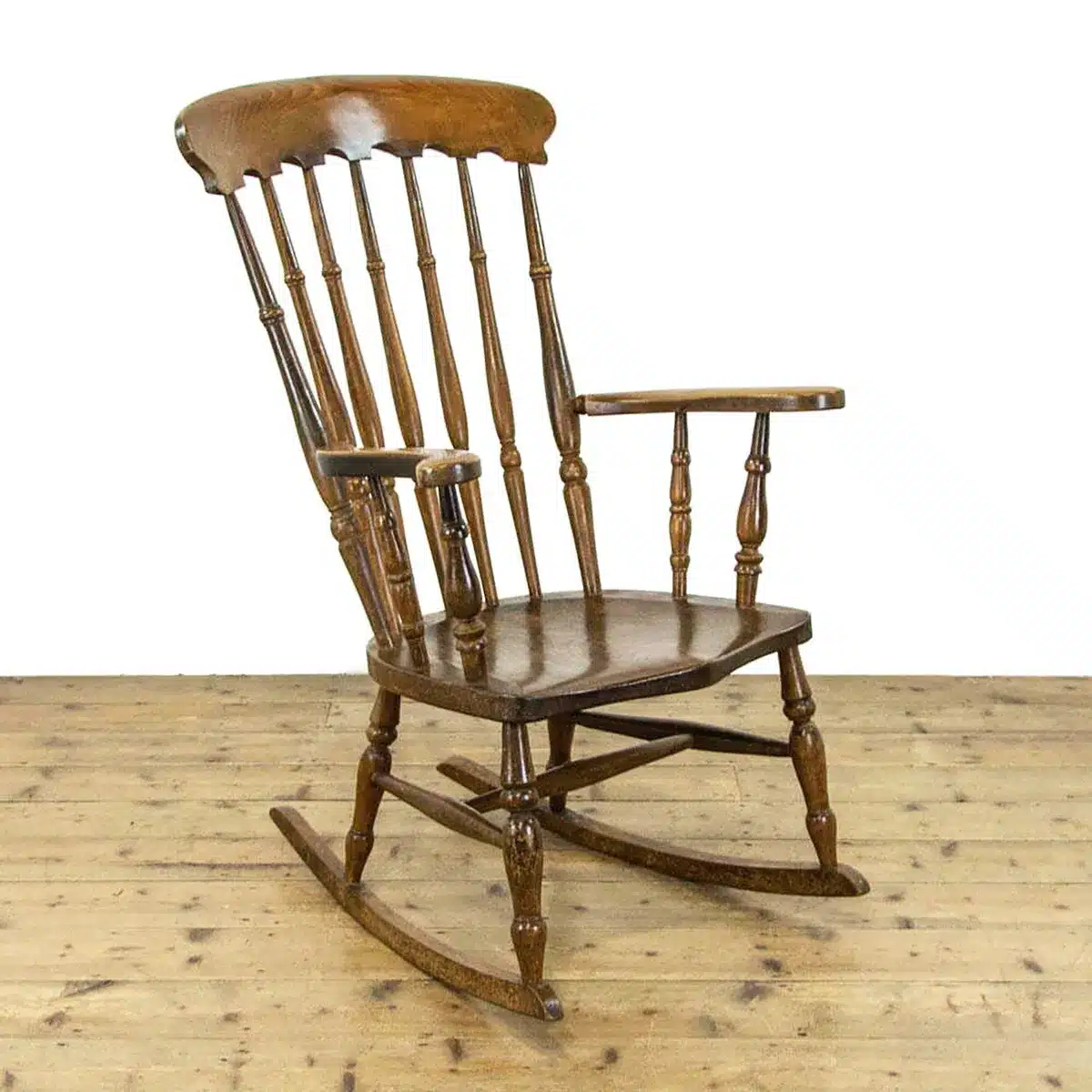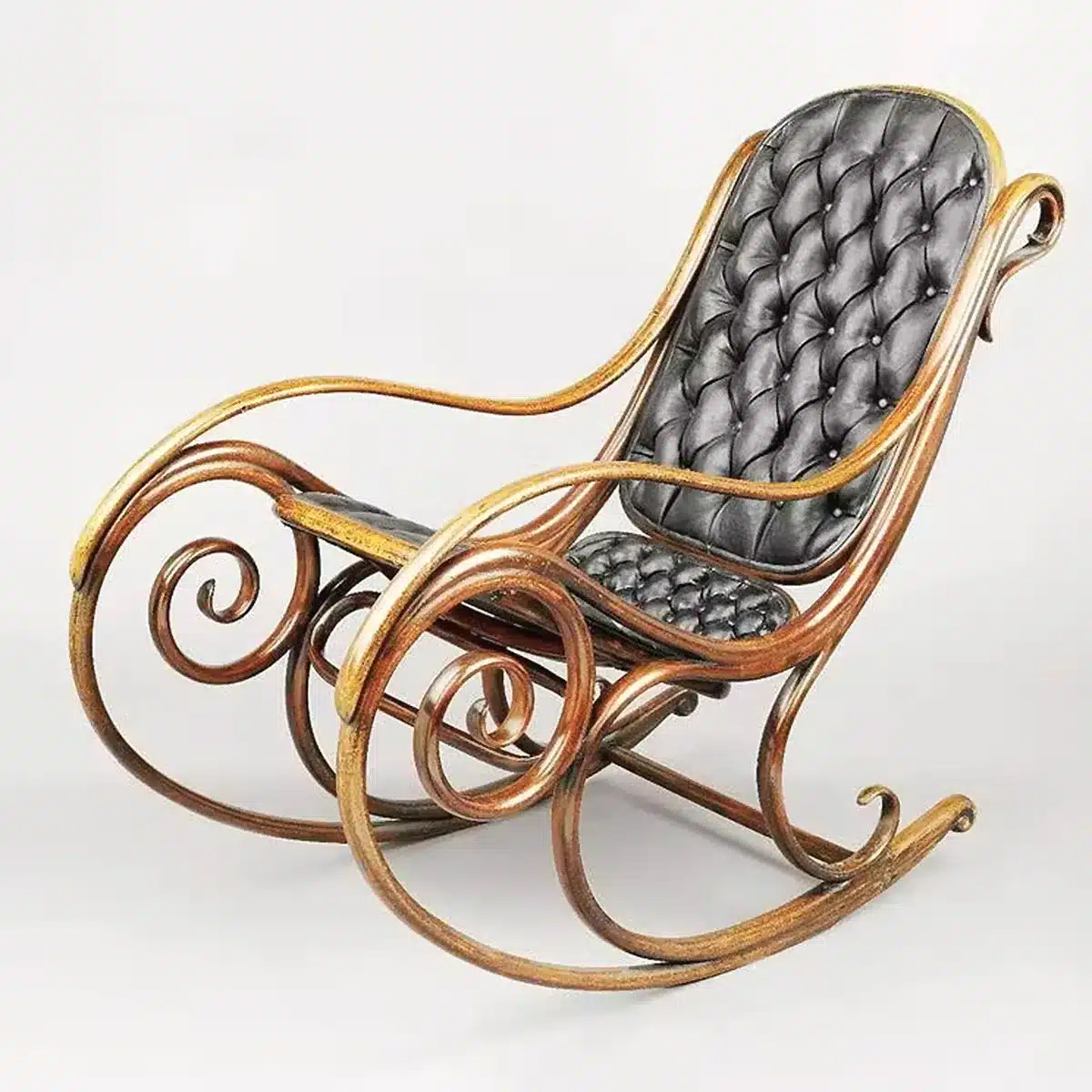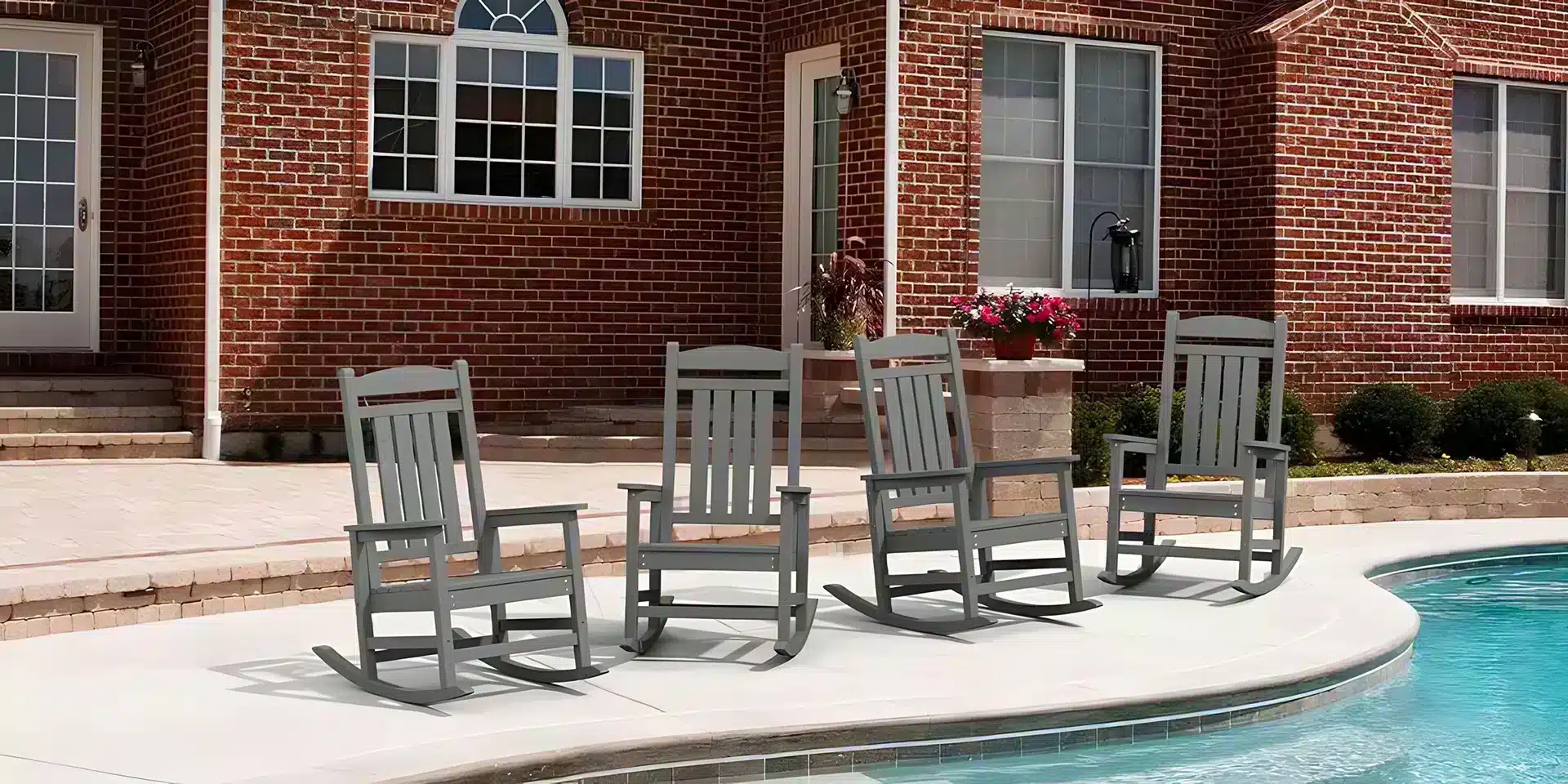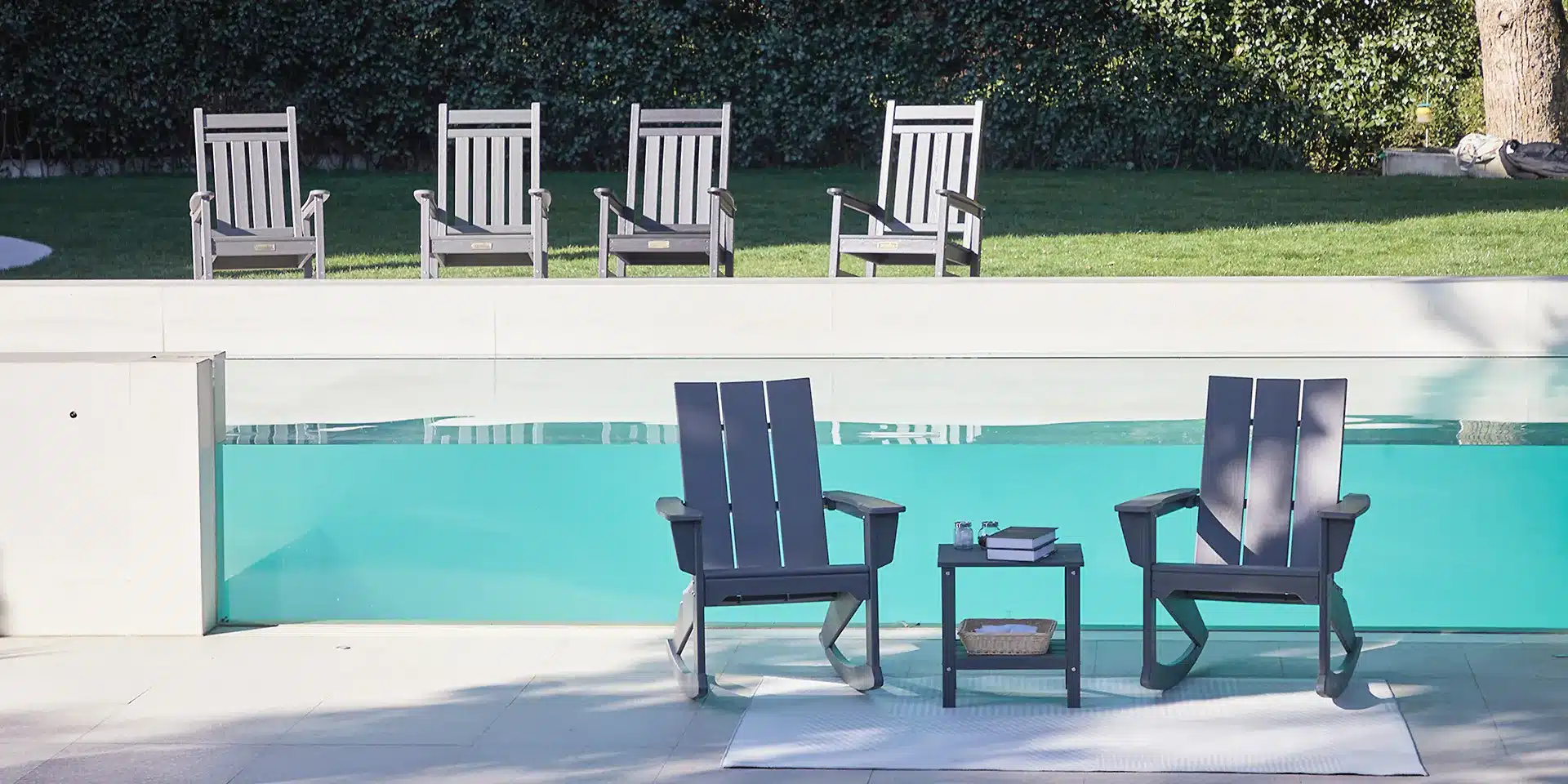The History of Rocking Chairs
Before diving into what is a good rocking chair, let’s take a brief look at the history of rocking chairs. Rocking chairs originated in North America in the early 18th century.Initially, rocking chairs were simply ordinary chairs with rockers attached to the legs. Over time, they evolved into the comfortable and stylish pieces of furniture we know today.

One of the most famous types of rocking chairs is the Windsor rocking chair, which originated in England in the early 18th century. This design features a solid wood seat, spindle back, and elegantly curved rockers.

In the 19th century, American craftsman Michael Thonet revolutionized rocking chair design with his bentwood rocking chair, which used steam-bent wood to create graceful, curved shapes.
Key Features of a Good Rocking Chair
When looking for a good rocking chair, there are several key features to consider. These features will ensure that the outdoor rocker is not only comfortable but also durable and aesthetically pleasing.
1. Comfort
Comfort is the most crucial factor when choosing a rocking chair. A good rocking chair should provide excellent support for your back and allow you to sit comfortably for extended periods. Here are some aspects to consider:
- Ergonomic Design: Look for chairs that offer ergonomic support, including a well-contoured seat and backrest. Lumbar support is essential for preventing back pain.
- Cushioning: While traditional wooden rocking chairs can be comfortable, adding cushions or opting for a padded rocking chair can enhance comfort significantly.
- Armrests: Comfortable armrests provide additional support and make it easier to relax.
2. Material
The material of the rocking chair plays a significant role in its durability, appearance, and comfort. Common materials include:
- Wood: Wooden rocking chairs, such as those made from oak, maple, or teak, are classic and durable. They offer a timeless aesthetic that fits various decor styles.
- Metal: Metal rocking chairs, often made from aluminum or steel, are sturdy and can be designed with sleek, modern aesthetics. They are also suitable for outdoor use due to their resistance to weather conditions.
- Wicker and Rattan: These materials offer a lightweight, airy feel, ideal for outdoor use. However, they may require more maintenance to keep them looking their best.

- Resin: Resin rocking chairs are crafted from high-quality synthetic materials, making them incredibly durable and resistant to the elements. These chairs are lightweight, yet sturdy, and can withstand exposure to sun, rain, and humidity without fading or deteriorating.
- Upholstery: Adding cushions can make the rocking chair more comfortable. Cushion fabric options range from cotton to leather, each with a different feel and durability.
3. Style and Design
The style and design of a rocking chair should complement your existing decor. Whether you prefer a traditional, rustic look or a modern, minimalist design, there’s a rocking chair to suit your taste. Some popular styles include:
- Traditional: Features classic designs, often made from wood with intricate detailing.
- Modern: Sleek, minimalist designs that use metal and upholstery for a contemporary look.
- Rustic: Often made from reclaimed wood or featuring distressed finishes, these chairs add a cozy, homey feel.
- Mid-Century Modern: Characterized by clean lines, organic shapes, and functional designs.
4. Size and Proportions
The size of the rocking chair should match the space where you plan to place it. Consider the following:
- Seat Height: Ensure the seat height allows your feet to rest flat on the ground when sitting.
- Seat Depth and Width: A seat that is too deep or too narrow can be uncomfortable. Test different sizes to find the best fit.
- Rocking Arc: The arc of the rockers affects the chair’s motion. A larger arc offers a more pronounced rocking motion, while a smaller arc provides a gentle rock.
5. Construction and Durability
A well-constructed rocking chair will last for years. Pay attention to the craftsmanship and joinery:
- Joinery: Look for chairs with mortise-and-tenon or dovetail joints, which are stronger and more durable than simple screws or nails.
- Finish: A high-quality finish protects the wood and enhances its appearance. Ensure the finish is smooth and free from defects.
- Weight Capacity: Check the weight capacity to ensure the chair can support users of various sizes.
5 Types of Rocking Chair
There are several types of rocking chairs, each with its unique characteristics and benefits. Here are some popular options:
1. Traditional Rocking Chairs
Traditional rocking chairs are typically made from wood and feature a simple, classic design. They are versatile and can be used indoors or outdoors. The iconic look of a traditional rocking chair makes it a favorite for porches and living rooms alike.
2. Glider Rocking Chairs
Glider rocking chairs offer a smoother motion than traditional rockers. Instead of rocking on curved rockers, they glide back and forth on a fixed track. This makes them a popular choice for nurseries, as they provide a gentle, soothing motion ideal for rocking babies to sleep.
3. Reclining Rocking Chairs
Reclining rocking chairs combine the benefits of a recliner with the soothing motion of a rocking chair. They offer adjustable positions, allowing you to recline and rock simultaneously. These chairs are perfect for those who want to relax and unwind after a long day.
4.High Back Rocking Chairs
High back rocking chairs are designed to withstand the elements. They are typically made from weather-resistant materials such as teak, aluminum, or synthetic wicker. These chairs are perfect for enjoying a peaceful afternoon on the porch or patio.
5. Upholstered Rocking Chairs
Upholstered rocking chairs provide the ultimate comfort with padded seats and backs. They come in various styles and fabrics, making it easy to find one that matches your decor. These chairs are ideal for living rooms, bedrooms, or any space where comfort is a priority.
Choosing the Best Rocking Chair for Your Space
Now that we’ve covered the key features and types of rocking chairs, let’s discuss how to choose the right one for your space.
For the Nursery
When selecting a rocking chair for a nursery, comfort and ease of use are paramount. Consider a glider rocking chair with a smooth, gentle motion.
Look for one with padded armrests and a high back for added support during late-night feedings. An easy-to-clean fabric is also a plus, given the likelihood of spills and stains.
For the Living Room
For the living room, style and comfort should be balanced. An upholstered rocking chair can add a touch of elegance while providing a cozy spot to relax. Choose a design that complements your existing furniture and decor. If you have a modern living room, a sleek, minimalist rocker might be the best choice.
For the Porch or Patio
Outdoor rocking chairs should be durable and weather-resistant. Wooden rocking chairs made from teak or cedar offer natural resistance to moisture and decay, making them ideal for outdoor use.
Metal rocking chairs, often with powder-coated finishes, provide robustness and a sleek, modern look that can handle the elements well.

Additionally, resin rocking chairs, crafted from high-quality synthetic materials like HDPE, are ideal for outdoor settings. Often UV-protected, these chairs retain their color and integrity even after prolonged exposure to direct sunlight.
Whichever material you choose, ensure the chair is comfortable for extended periods of relaxation.
For Small Spaces
If you have limited space, consider a compact rocking chair with a smaller footprint. Look for designs that are lightweight and easy to move. A folding rocking chair can be a practical solution, as it can be stored away when not in use.
Maintenance Tips
To ensure your rocking chair remains in good condition for years to come, follow these maintenance and care tips:
- Regular Cleaning: Dust and clean your rocking chair regularly to prevent dirt and grime buildup. Use a damp cloth for wooden and metal chairs, and vacuum upholstered chairs to remove dust and debris.
- Protect from the Elements: If your rocking chair is used outdoors, protect it from harsh weather conditions. Use covers or store the chair indoors during inclement weather to prevent damage.
- Tighten Screws and Bolts: Periodically check and tighten any screws or bolts to maintain the chair’s stability and prevent wobbling.
- Refinish Wood: If the finish on your wooden rocking chair starts to wear, consider refinishing it to restore its appearance and protect the wood. Sand the surface lightly and apply a fresh coat of varnish or paint.
- Replace Cushions: If the cushions on your rocking chair become worn or flattened, replace them to maintain comfort. Look for high-quality, durable cushions that provide adequate support.
Final Thoughts
By considering key features such as comfort, material, style, size, and construction, you can find a rocking chair that meets your needs and enhances your living space. With proper care and maintenance, your rocking chair will remain a cherished part of your home for years to come.
Choose the best outdoor rocking chair and start your rocking life. Shop Now!




